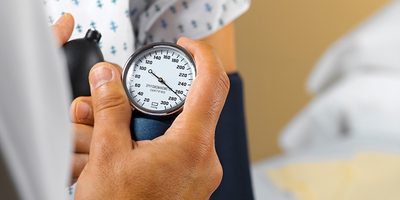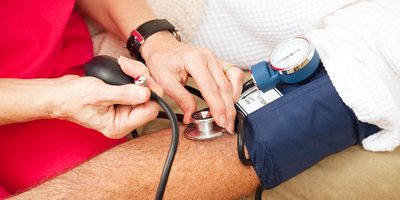
Innovative triple pill significantly lowers blood pressure, study finds
A new low dose three in one pill to treat hypertension could transform the way high blood pressure is treated around the world.
A trial led by The George Institute for Global Health revealed that most patients – 70 per cent – reached blood pressure targets with the ‘Triple Pill’, compared to just over half receiving normal care.
With high blood pressure the leading cause of disease burden worldwide, it’s expected the findings published in JAMA will change guidelines globally.
Dr Ruth Webster, of The George Institute for Global Health, said this was a major advance by showing that the Triple Pill was not only more effective than standard care, it was also safe. “It's estimated more than a billion people globally suffer from high blood pressure with the vast majority having poorly controlled blood pressure. Our results could help millions of people globally reduce their blood pressure and reduce their risk of heart attack or stroke.”
The researchers tested an entirely new way of treating hypertension by giving patients three drugs, each at half dose, in a single pill for early treatment of high blood pressure. Traditionally patients begin treatment with one drug at a very low dose, which is increased over time with additional drugs added and increased in dosage to try to reach target.
Dr Webster added: “Patients are brought back at frequent intervals to see if they are meeting their targets with multiple visits required to tailor their treatments and dosage. This is not only time inefficient, it’s costly. We also know that many doctors and patients find it too complicated and often don’t stick to the process. This new approach is much simpler and it works.”
The trial, which was conducted in Sri Lanka, enrolled 700 patients with an average age of 56 and blood pressure of 154/90 mm Hg.
Patients were randomly assigned to receive either the combination pill or usual care – their doctor’s choice of blood pressure lowering medication. The Triple Pill, consisted of the blood pressure medications telmisartan (20 mg), amlodipine (2.5 mg), and chlorthalidone (12.5 mg).
Compared with patients receiving usual care, a significantly higher proportion of patients receiving the Triple Pill achieved their target blood pressure of 140/90 or less (with lower targets of 130/80 for patients with diabetes or chronic kidney disease).
At six months, 83 percent of participants in the Triple Pill group were still receiving the combination pill compared to the majority of patients in the usual-care group still receiving only one and only one third receiving two or more blood-pressure–lowering drugs.
Professor Anushka Patel, Principal Investigator of the trial and Chief Scientist at The George Institute, said this was a big improvement. “The World Heart Federation has set an ambitious goal that by 2025 there will be a 25 per cent reduction in blood pressure levels globally. The Triple Pill could be a low-cost way of helping countries around the world to meet this target.
“This study has global relevance. While the most pressing need, from the perspective of the global burden of disease, is low-and-middle-income countries, it's equally relevant in a country like Australia where we're still achieving only 40%-50% control rates for high blood pressure.”
The George Institute is now looking at strategies to maximise uptake of the study results. This includes examining the acceptability of the Triple Pill approach to patients and their doctors, as well as cost-effectiveness which will be important for governments and other payers to consider.
The study was funded by the National Health and Medical Research Council of Australia as part of the Global Alliance for Chronic Disease.




